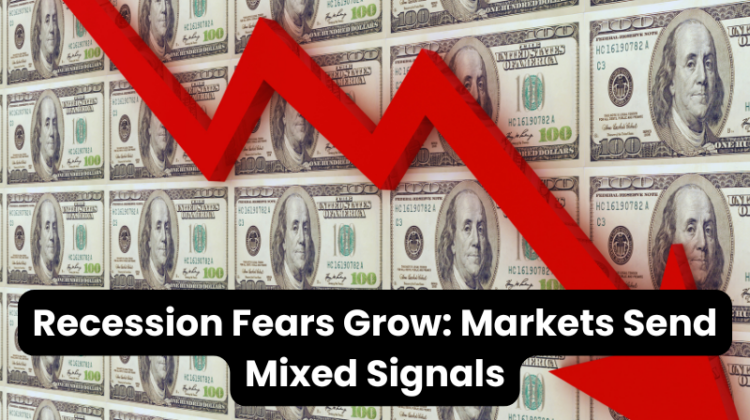
This week, the financial markets experienced a rollercoaster ride, with stocks stumbling and bonds and oil prices flashing warning signs of a potential recession.
Let’s break down the key events and their implications for investors.
Recession Fears Growing
________________________________________________________________________
- Stocks wobble as bond yields and oil prices signal recession fears.
- The tech sector shows signs of recovery after a recent sell-off.
- Labor market concerns grow following weak ADP private payrolls report.
________________________________________________________________________
Stock Market Turbulence
After two days of technology-led turmoil, the stock market showed signs of stabilization.
The S&P 500 index opened flat but experienced fluctuations throughout the day, ultimately closing slightly lower.
This movement closely mirrored the 0DTE (zero days to expiration) options flow, peaking in the morning before declining later in the day.
Interestingly, both the VIX (a measure of market volatility) and VVIX (volatility of volatility) indices failed to break out, with the VIX closing below 20 for the first time this week.
This suggests a slight easing of market tension.
Sector Performance
While technology stocks led the decline earlier in the week, they showed signs of recovery.
NVIDIA (NVDA) managed to close slightly higher after recent losses, and the tech and communications sectors rebounded.
Consumer discretionary stocks also performed well, with Tesla (TSLA) and Amazon (AMZN) leading the gains.
Bond Market Signals
Despite the stock market’s mixed performance, the bond market is sending clear recession signals.
Treasury yields fell for the third consecutive day, reaching levels not seen since early 2024.
This decline in yields suggests growing investor concern about economic growth prospects.
Labor Market Concerns
Adding to recession fears, the ADP private payrolls report showed the worst performance since January 2021.
This disappointing data has investors eagerly awaiting the upcoming official payrolls report, which could provide further insight into the state of the job market.
Oil Price Slump
Oil prices continued their downward trend, reaching new lows for 2024 and approaching 2023 lows.
This decline persisted despite a significant draw in crude oil inventories, highlighting the market’s focus on recession fears rather than supply-demand dynamics.
Gold’s Resilience
As uncertainty grows, gold prices have shown resilience, retesting all-time highs. Investors often turn to gold as a safe-haven asset during times of economic turmoil.
The recent disinversion of the 2s10s yield curve, a closely watched recession indicator, suggests that an economic downturn may be on the horizon.
This possibility, combined with rising US debt levels, could lead to significant policy responses, including potential stimulus measures.
As we navigate these uncertain times, investors should stay informed and consider diversifying their portfolios to weather potential economic storms.
Keep an eye on upcoming economic data releases and central bank decisions, as they will likely play a crucial role in shaping market trends in the coming months.

Leave a Reply